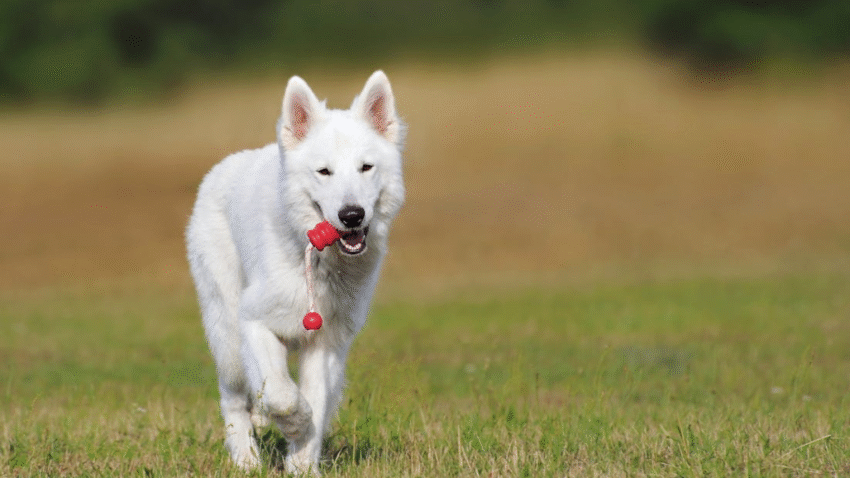Dogs are naturally adventurous—running through bushes, chasing balls, and exploring the outdoors. But with that curiosity often comes the occasional scratch or scrape. In this guide, you’ll learn how to treat minor cuts and scrapes on your dog at home, safely and confidently. Knowing how to handle these small injuries can help you avoid infections and vet bills.
Why Treating Minor Wounds Matters for Dogs
Even small wounds can become serious if left untreated. Bacteria and debris can quickly lead to infections, especially if your dog keeps licking or scratching the area. Prompt care:
- Prevents infection
- Speeds up healing
- Reduces pain and irritation
- Saves unnecessary vet trips
- Keeps your dog more comfortable
Learning basic wound care is a great skill for any responsible dog owner.
Step-by-Step Guide to Treating Minor Cuts and Scrapes
Step 1: Keep Your Dog Calm and Still
Before you begin, gently restrain your dog or have someone help you hold them still. Speak in a soothing voice and use treats or a leash to reduce stress.
For small dogs, place them on a table or your lap. For larger dogs, kneel beside them on the floor.
Step 2: Assess the Injury
Take a close look at the wound to determine if it’s safe to treat at home:
- Minor wounds: Surface scratches, shallow cuts, or scrapes smaller than a coin can usually be treated at home.
- Serious wounds: Deep cuts, heavy bleeding, or punctures near the eyes, joints, or chest need veterinary care.
If in doubt, always call your vet.
Step 3: Trim Hair Around the Wound (If Needed)
Use blunt-nosed scissors to carefully trim fur around the wound. This helps you clean it properly and prevents hair from sticking to it.
Be very careful not to cut the skin. If you’re unsure, skip this step and move on to cleaning.
Step 4: Clean the Wound Gently
Use the following method to clean the wound:
- Rinse the area with warm water to remove dirt and debris.
- Apply saline solution or clean with diluted antiseptic solution (like povidone-iodine or chlorhexidine).
- Gently blot the area dry with a clean gauze pad or paper towel.
Avoid hydrogen peroxide or alcohol—they can delay healing and irritate the skin.
Step 5: Apply a Pet-Safe Antibacterial Ointment
Use an over-the-counter antibiotic ointment made for pets, such as those containing bacitracin or neomycin. Apply a thin layer to the cleaned area.
Avoid human ointments unless your vet approves them—some contain ingredients that are toxic to dogs if ingested.
Step 6: Prevent Licking and Scratching
Your dog will naturally want to lick the wound, but this can cause infection. To prevent this:
- Use an Elizabethan collar (cone) or a soft recovery collar
- Apply a light bandage (only if your dog won’t chew it)
- Distract with toys or treats
Keep an eye on the wound for a few days and prevent licking until it fully scabs over.
Step 7: Monitor Healing Over the Next Few Days
Check the wound 1–2 times per day for signs of infection:
- Redness or swelling
- Pus or unusual discharge
- Foul smell
- Pain when touched
If symptoms worsen or don’t improve within 3 days, consult your vet.
Common Mistakes to Avoid
1. Using Human Products Without Vet Approval
Many human ointments, especially those with painkillers, can be harmful to dogs. Always use pet-specific products.
2. Leaving the Wound Dirty
Skipping the cleaning step can trap bacteria inside the wound and increase infection risk.
3. Letting the Dog Lick the Wound
Licking might seem soothing, but it introduces bacteria and delays healing. Always prevent access to the wound.
4. Over-Bandaging
Tightly wrapped or left-on-too-long bandages can cause more harm than good. Only use light, breathable bandages if necessary and change them daily.
5. Ignoring Behavioral Signs
If your dog is suddenly limping, licking obsessively, or acting in pain, don’t wait—have a vet examine the injury.
Extra Tips & Recommendations
Keep a Dog First Aid Kit
Stock it with essentials like:
- Saline solution
- Antiseptic wipes
- Pet-safe antibiotic ointment
- Gauze pads and vet wrap
- Blunt-nose scissors
- Tweezers
- An E-collar or cone
Use Paw Protection on Walks
If your dog frequently scrapes their paws or gets cuts, consider dog boots or paw wax to protect their feet outdoors.
Learn Basic Canine First Aid
Consider taking a pet first aid course. It can prepare you for emergencies and help you act quickly when your dog needs care.
Conclusion
Treating minor cuts and scrapes on your dog is simple when you know the right steps. Clean the wound, apply the right ointment, and prevent licking—and your dog will be on their way to a quick recovery. Always monitor healing, and never hesitate to contact your vet if something seems off.
🩹 Want more step-by-step guides on caring for your dog at home? Bookmark us for trusted tips and pet care solutions!
